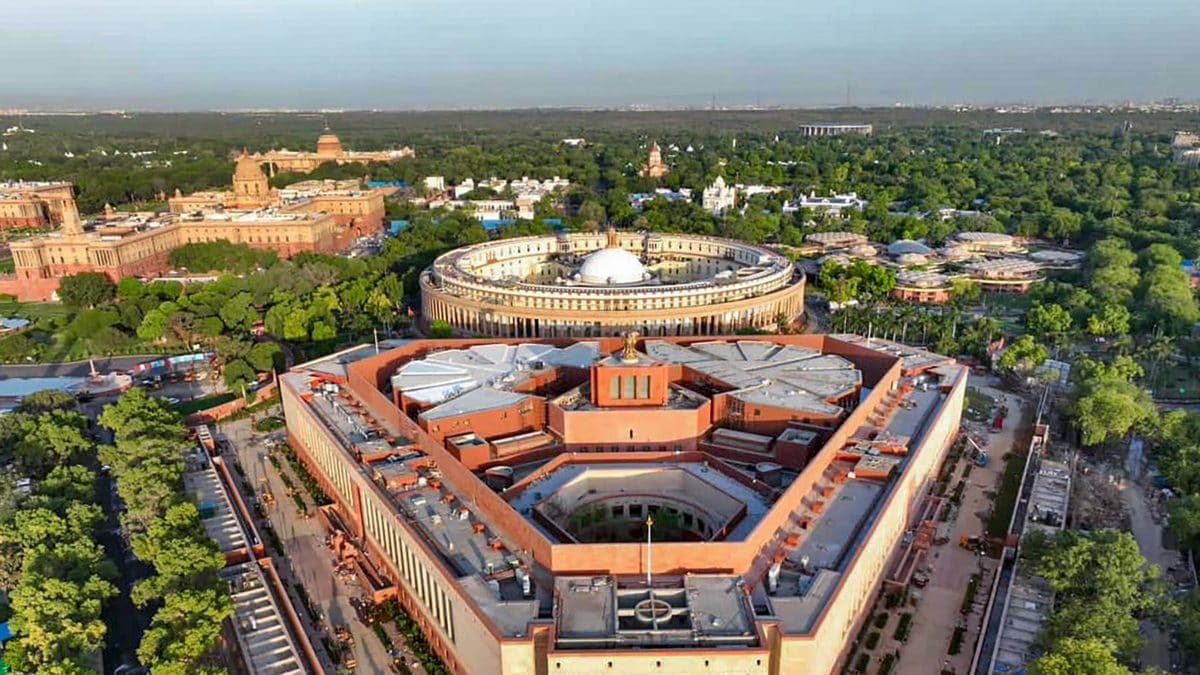[ad_1]
Prime Minister Narendra Modi inaugurated the new Parliament building in a grand ceremony on Sunday. The new Parliament building, completed in a little over two years, required an estimated cost of Rs 1200 crore. With a triangular shape and four storeys, the building spans a built-up area of 64,500 square meters. It has three main gates named Gyan Dwar, Shakti Dwar, and Karma Dwar. Additionally, separate entrances have been designated for VIPs, MPs, and visitors.
The new building, undertaken by Tata Projects Ltd, features a grand Constitution Hall that showcases India’s democratic heritage. It also includes a lounge for Members of Parliament (MPs), a library, multiple committee rooms, dining areas, and ample parking space.
The foundation stone of the newly constructed Parliament building was laid by the Prime Minister as part of the ambitious Central Vista project on December 10, 2020. The construction work commenced in early 2021 and has now been successfully concluded.
Where is the New Parliament Located?
The new Parliament building is located approximately 750 meters away from the Rashtrapati Bhavan and surrounded by significant landmarks and government buildings. These include Vijay Chowk, India Gate, National War Memorial, the Vice President’s house, Hyderabad House, the Secretariat building, the Prime Minister’s office and residence, ministerial buildings, and various other administrative units of the Indian government.
What are the nearby metro stations?
For convenient transportation, several nearby metro stations serve as crucial hubs for visitors and members of Parliament to access the Indian Parliament. The Central Secretariat, Udyog Bhawan, Patel Chowk, Janpath, and Rajiv Chowk are among the closest metro stations to the Parliament House.
Patel Chowk and Udyog Bhawan stations are situated on the Yellow Line, while the Central Secretariat station serves as an interchange facility between the Yellow Line and Violet Line. Rajiv Chowk metro station serves as an intersection for the Yellow and Blue Lines, and Janpath metro station is located on the Violet Line.
The coordinates of the new Parliament building are- 28°37’02.0″N 77°12’36.0″E.
Due to the inauguration of the new parliament building, all entry and exit gates at the Central Secretariat and Udyog Bhawan stations were closed, according to officials. Additionally, gate number three of the Patel Chowk metro station, which opens on Ashoka Road, was closed around noon.
While the gates of Central Secretariat and Udyog Bhawan were closed since the start of metro services on Sunday, interchange facilities were available at the Central Secretariat station.
Regular announcements have been made at these stations throughout the morning to inform passengers about the closures.
In anticipation of the inauguration, the police have issued a traffic advisory, designating the New Delhi district as a controlled area with restricted entry of vehicles. Additional deployment of security forces were implemented, and continuous CCTV monitoring was carried out to ensure safety and security.
Inauguration
The inauguration events for the new Parliament building took place despite the boycott by several Opposition parties who had insisting that President Droupadi Murmu, as the Head of the State, should perform the honors.
The prime minister in his inaugural speech said the revered Sengol has also been installed in the new Parliament building on this historic day. “In the Chola empire, it (Sengol) was considered a symbol of the Kartavya path (path of duty), Seva Path (path of service) and Rashtra path (path of the nation),” Modi said.
The prime minister said India’s democracy was its inspiration, the Constitution its resolve and Parliament was the best representative of this inspiration and resolution.
“The new Parliament building will be a testament to the dawn of Aatmanirbhar Bharat (self-reliant India). It will be a witness to our journey towards a Viksit Bharat (developed India),” Modi said.
More than just a building, the new Parliament encompasses the aspirations and dreams of 1.4 billion people. It sends a powerful message to the world about India’s unwavering determination, Modi said.
Various materials used in the construction of the building have been sourced from different parts of the country. The teakwood originated from Nagpur in Maharashtra, while the red and white sandstone was procured from Sarmathura in Rajasthan. Sarmathura is known for supplying sandstone for iconic structures like the Red Fort and Humayun’s Tomb in the national capital.
The new Parliament building has a seating capacity of 888 members in the Lok Sabha chamber and 300 members in the Rajya Sabha chamber. In the event of a joint sitting of both Houses, the Lok Sabha chamber can accommodate a total of 1,280 members.
[ad_2]
Source link


